
The numbers on the clock glow. Your body is buzzing, your heart is doing a weird little drum solo, and your brain is already making a to-do list for a day that hasn’t started.
You are wide awake. And you are furious.
If this is you, I just want to say one thing: You are not broken. And you are definitely not alone. This phenomenon is so common that it has its own clinical name: “sleep maintenance insomnia.” And honestly? It’s even more common than the inability to fall asleep.
Let’s just look at the numbers for a second. The Centers for Disease Control and Prevention (CDC) reported in 2020 that 17.8% of adults in the U.S. had difficulty staying asleep, while 14.5% had trouble falling asleep in the first place. It tends to hit women harder, with 20.7% of women reporting this, compared to 14.7% of men. And this isn’t a one-off bad night. One U.S. study found that a whopping 35.5% of people wake up in the middle of the night on three or more nights every week.
So, welcome to the club. It’s a terrible club, and we’re going to get you to cancel your membership.
The 3 A.M. wakeup isn’t a mystery. It’s a predictable “perfect storm” of biology, psychology, and a few daily habits that are quietly sabotaging you. The solutions aren’t about buying a new gadget; they’re about retraining your brain and body.
The 3 A.M. Window of Vulnerability: Why That Exact Time?

It feels personal, doesn’t it? Like your brain has a cruel, specific alarm set. But it’s not. 3 A.M. just happens to be the precise moment of a biological “changing of the guard,” when your sleep is at its most fragile. It’s a convergence of two things.
1. Your Sleep Architecture Gets “Lighter”
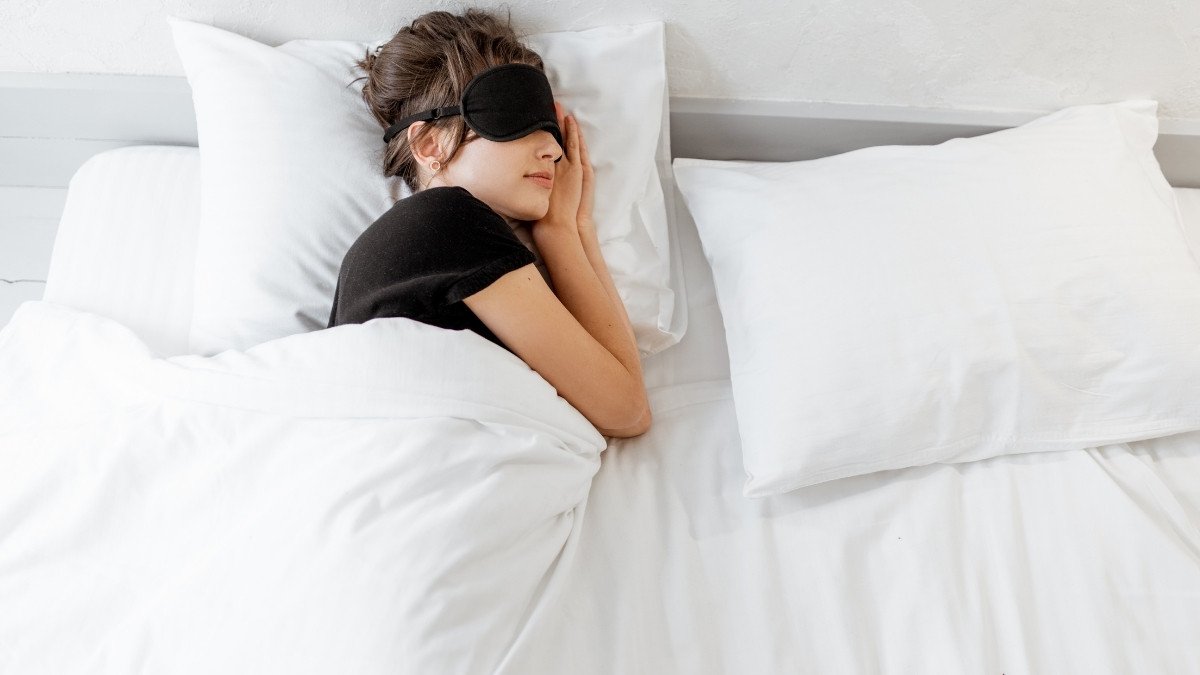
Think of your sleep in two halves. For someone with a 10 or 11 P.M. bedtime, the first half of the night is dominated by deep, restorative NREM (non-REM) sleep. This is “brick” sleep. You’re metabolically out of it, and it’s hard to wake you.
But the second half of the night is totally different. Your sleep architecture shifts to be dominated by REM (Rapid Eye Movement) sleep. As sleep specialist Dr. Nancy Foldvary-Schaefer of the Cleveland Clinic explains, for a standard sleeper, “3 a.m. is typically when you’re in REM sleep… REM is the lightest stage of sleep”.
During REM, your brain is wildly active—almost indistinguishable from your waking brain.
This creates the “Window of Vulnerability.” A car door slams at 11:30 P.M., and you sleep right through it (you’re a “brick”). That same noise at 3 A.M. (when you’re in “light” REM sleep) is enough to push you past the arousal threshold and into full, conscious, “m-going-to-be-a-wreck-tomorrow” wakefulness.
2. The Hormonal “Handoff” Crisis
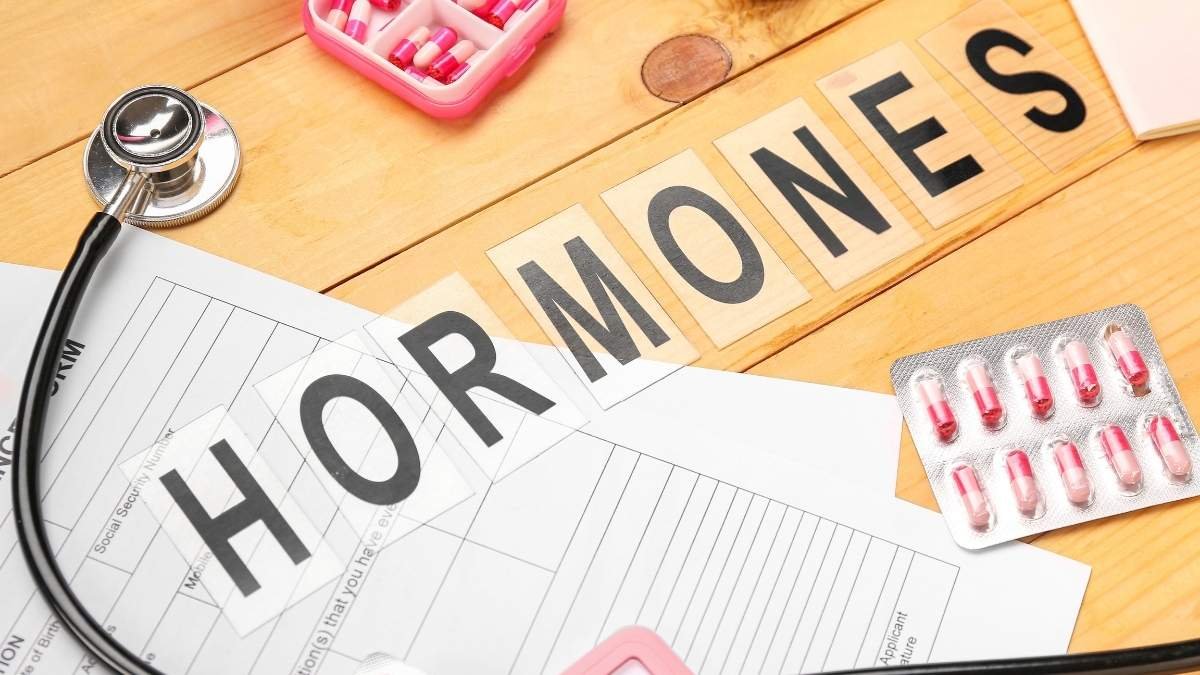
This is the big one. Right at that 3 A.M. window, your body’s master clock (the Suprachiasmatic Nucleus, or SCN) is conducting its 24-hour hormonal “changing of the guard”.
- Melatonin Wanes: Melatonin, the “go to sleep” hormone, reaches its peak around 3 A.M. and then begins to decline. Its protective, sleepy signal is fading.
- Cortisol Rises: At the same time, cortisol, the primary “wake up and get moving” hormone, naturally begins to rise. It’s at its lowest in the evening, but it starts its climb between 2 A.M. and 3 A.M. to gently prepare your body to be alert… hours from now.
In a healthy sleeper, this handoff is smooth. You don’t feel it. But in a poor sleeper, this handoff is “fumbled.” The fading melatonin and the light REM sleep make that normal, gentle rise in cortisol feel like a jolt or an alarm.
3. The Accelerant: The Anxiety-Cortisol Spiral

And this, my friend, is where we make it so much worse. Stress is the accelerant. Your body’s central stress-response system is the Hypothalamic-Pituitary-Adrenal (HPA) axis. If you’re chronically stressed or anxious, your HPA axis is already “hyperactivated”.
Research explains this with a powerful analogy: the “Full Cup”.
- Imagine your body is a cup and cortisol is a liquid.
- In a healthy person, the cup is mostly empty at night. The normal 3 A.M. cortisol rise adds a little liquid, but the cup doesn’t overflow.
- In a stressed person, their “cup is already brimming with stress hormones” from the day.
- When that normal 3 A.M. cortisol rise occurs, “their metaphorical cups overflow”. This “overflow” triggers your fight-or-flight system. Your heart pounds. You’re jolted awake.
And what’s the very first thing you do? You look at the clock.
You engage in catastrophic “sleep math.” (“Oh, great. I only have two hours until my alarm. I’ll be useless tomorrow.”). This new, acute anxiety is itself a stressor. It activates the HPA axis and dumps even more cortisol into your brimming cup.
You are now in a vicious feedback loop. The 3 A.M. wakeup has gone from a symptom of stress to a self-perpetuating cause of its own cycle.
The Accelerants: 3 Triggers That Prime the 3 A.M. Jolt
So, what’s filling that “cup” to the brim before you even go to bed? While the biological window is universal, these three lifestyle choices are the most common accelerants.
1. The Deceptive Sedative: Alcohol’s Rebound Effect

That “nightcap” you think is helping you? It’s a trap. Alcohol is frequently used to fall asleep because it is a sedative. But as sleep experts are quick to point out, “sedation is not natural sleep”.
Alcohol’s effect is a two-act play:
- Act 1 (First Half of Night): Alcohol increases your deep, slow-wave sleep.17 This creates the illusion that it’s helping.
- Act 2 (Second Half of Night): As your body metabolizes the alcohol, the sedation wears off and a “rebound effect” begins. Research is crystal clear: alcohol significantly disrupts the second half of the sleep cycle. It causes more awakenings (what researchers call WASO, or Wake After Sleep Onset) and fragments your sleep. It also suppresses your REM sleep.
You’re effectively “borrowing” deep sleep from the first half of the night and “paying” for it with fragmented, garbage sleep in the second half. This metabolic disruption lines up perfectly with the 3 A.M. vulnerability window.
2. The Lingering Stimulant: Caffeine’s Extended Half-Life
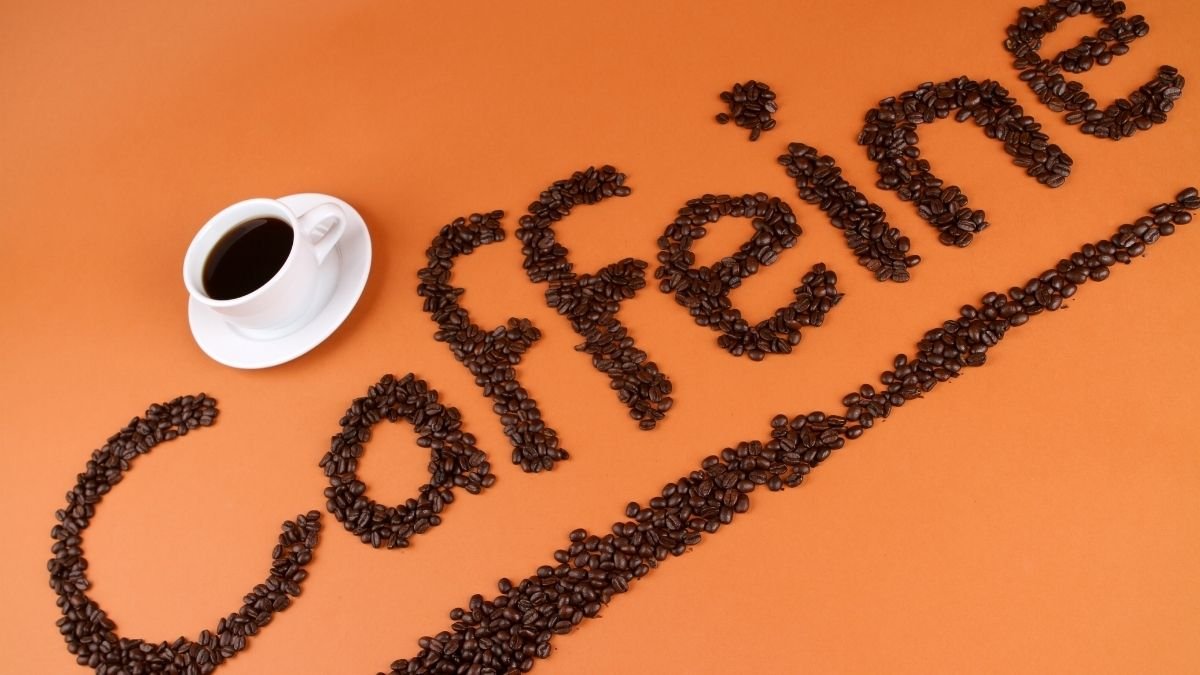
“But my 4 P.M. coffee doesn’t affect me! I fall asleep just fine.”
I hear this all the time. And you might be right… about falling asleep. The problem is staying asleep. Caffeine’s entire job is to block adenosine, the neurochemical that builds up all day to create “sleep pressure”.
The half-life of caffeine is wildly variable, lasting anywhere from 2 to 10 hours in adults. That 4 P.M. coffee is still bouncing around in your system at 3 A.M. It makes your sleep “shallower” by increasing light sleep and decreasing that deep, restorative N3 sleep.
A 2023 systematic review finally gave us some evidence-based cutoff times:
- To avoid messing with your total sleep, a standard coffee (approx. 107 mg) should be consumed at least 8.8 hours before bedtime.
- A standard pre-workout supplement (approx. 217.5 mg)? At least 13.2 hours before bedtime.
- Another study found that 400 mg of caffeine (a large coffee) taken even 6 hours before bed cut total sleep time by 41 minutes and increased night awakenings.
That “shallow” sleep makes you a sitting duck for the 3 A.M. cortisol jolt.
3. The Glycemic Rollercoaster: The “Crash-and-Jolt” Awakening

This one is sneaky. A significant drop in your blood sugar during the night, called nocturnal hypoglycemia, is perceived by your body as an emergency. To “rescue” your brain (which needs glucose), your body releases a cascade of “rescue” hormones: adrenaline, growth hormone, and, you guessed it, cortisol. This hormonal surge is designed to jolt you awake.
This awakening can be triggered by two opposite mistakes:
- Skipping Meals: You go to bed after skipping dinner. Your liver’s fuel stores run out too early. By 3 A.M., your blood sugar dips, and the “rescue” jolt hits.
- The Wrong Snack: You eat a high-sugar, simple-carb snack before bed (ice cream, cookies, candy). This causes a rapid spike in blood sugar, followed by a huge insulin release. This insulin “overshoots” its target, causing a reactive hypoglycemic crash a few hours later. That crash occurs around 2-3 A.M., triggering the same cortisol and adrenaline jolt.
9 Non-Gadget Solutions to Stop the 3 A.M. Wake-Up
Okay, so how do we fix this? The solutions are rooted in retraining your brain and biology. This is the core of Cognitive Behavioral Therapy for Insomnia (CBT-I), which is the gold-standard, first-line treatment recommended by every major medical institution over medication.28
Solution 1: Implement Stimulus Control Therapy (The “Get Out of Bed” Rule)
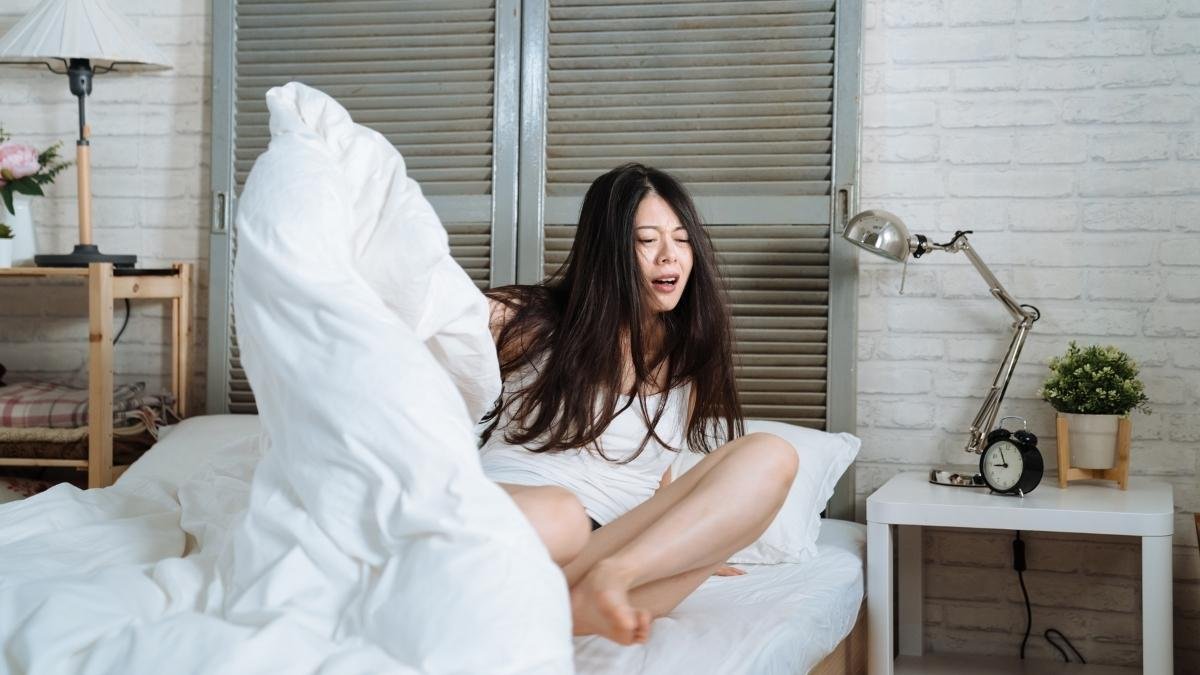
The core problem in chronic insomnia is that your brain has formed a learned association between “bed” and “being awake and anxious.” By lying in bed, worrying, and clock-watching, you have trained your brain that the bed is a “place for worrying,” like Pavlov’s dogs. The myth is that “resting” in bed is good. The reality is that it actively reinforces the insomnia. These next two protocols are designed to break that association.
This is the most important rule. It sounds counterintuitive, but it works by extinguishing the bed-anxiety link.
- Rule 1: Use the bedroom only for sleep and sexual activity. No reading, no working, no watching TV in bed.
- Rule 2: Go to bed only when you are physically sleepy.
- Rule 3 (The 15-Minute Rule): If you wake up at 3 A.M. and are not back to sleep in 15-20 minutes (don’t watch the clock, just guess), you must get out of bed. Do not “try” to sleep.
- Rule 4: Go to another room. Keep the lights as dim as possible. Do something quiet, relaxing, and mind-numbingly boring (e.g., read a dull book, do a puzzle, listen to calm music).
- Rule 5: Return to bed only when you feel sleepy again. If you get in bed and still can’t sleep, repeat the process.
- Rule 6 (The Anchor): You must wake up at your set wake-up time, no matter how little you slept. Do not sleep in. This builds up an enormous “sleep drive” (adenosine pressure) for the next night, which helps consolidate your sleep.
Solution 2: Apply Sleep Restriction Therapy (Consolidating “Junk Sleep”)

This is a more structured CBT-I technique developed by Dr. Arthur Spielman. It’s designed to force your brain to consolidate sleep by restricting your time in bed (TIB) to match your actual average time spent asleep.
- How it works:
- Step 1 (Calculate): Keep a sleep diary for a week. Let’s say you’re in bed for 9 hours (10 P.M. – 7 A.M.), but with all the awakenings, you only average 6.5 hours of actual sleep. Your “Sleep Efficiency” is 72% (6.5/9.0).
- Step 2 (Restrict): Your new prescribed “sleep window” is your average sleep time (6.5 hours). You’d set a new, later bedtime, like 12 A.M. to 6:30 A.M.
- Step 3 (Consolidate): The first few nights will be rough. You’ll be very tired. But this intense “sleep drive” makes your brain so desperate for sleep that it cannot afford the “luxury” of a 3 A.M. wakeup. It forces 6.5 hours of deep, consolidated sleep, eliminating the fragmentation.
- Step 4 (Expand): Once your Sleep Efficiency in this new window is high (e.g., you’re sleeping solidly for >90% of your window), you can gradually add 15-30 minutes back to your time in bed.
- Critical Safety Warning: Time in bed should never be restricted to less than 5.5 hours. This technique is not for everyone; talk to a provider if you have bipolar disorder, a seizure disorder, or other medical conditions.
| Table 1: CBT-I “Tough Love” Protocols for Sleep Maintenance | |
| Stimulus Control Therapy | |
| What It Is | A set of rules to re-associate the bed with sleep. |
| Primary Mechanism | Behavioral Extinction: Breaks the “bed = anxiety” paired association. |
| Key Instruction | If you are awake for 15-20 minutes, get out of bed. |
| When to Use It | Use these rules tonight when you wake up. |
| Critical Warning | N/A |
| Source(s) | 30 |
Solution 3: The 9 A.M. Fix for the 3 A.M. Problem (Morning Sunlight)
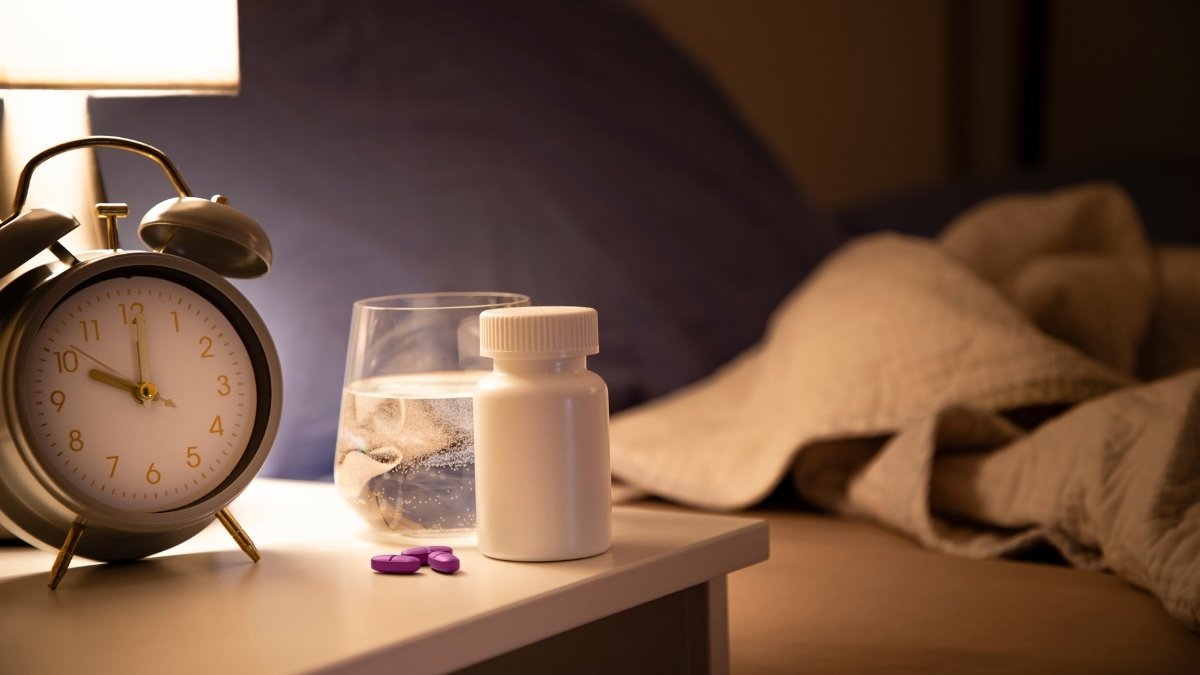
A good night’s sleep starts the moment you wake up. Your master clock (the SCN) is highly sensitive to light, and morning sunlight is the most powerful zeitgeber (German for “time-giver”) to “anchor” your 24-hour clock.
By getting 10-15 minutes of direct, bright, natural light at a consistent time each morning, you send an unambiguous signal to your SCN: “The 24-hour cycle starts now.” The SCN then correctly calculates and programs the timing of all your other rhythms—including the timing and slope of that 3 A.M. cortisol rise. A strong morning light routine is the single best preventative measure to ensure that cortisol rise is a gentle, predictable process, not a chaotic jolt.
Solution 4: Master the Thermostat (Thermoregulation)

To stay asleep, your body’s core temperature must drop and remain low. A bedroom that’s too warm directly interferes with this.
- The Ideal Temp: The best room temperature for most adults is approximately 65 degrees Fahrenheit (18.3 degrees Celsius). The sweet spot is 65 to 68 degrees Fahrenheit (15.6 to 20 degrees Celsius).
- The Evidence: A massive study analyzing 3.75 million nights of sleep found that higher bedroom temperatures were associated with shorter sleep and longer Wake After Sleep Onset (WASO).
- Note for Older Adults: A 2023 study found that the ideal range for older adults might be slightly warmer, from 68 to 77 degrees Fahrenheit (20 to 25 degrees Celsius).
Solution 5: Strategic Daily Movement (Exercise)

Exercise builds “sleep pressure” and, more importantly, improves the quality and depth of your sleep. As Dr. Helen Burgess, Ph.D., co-director of the Sleep and Circadian Research Laboratory at the University of Michigan, puts it, “Exercise… improves the restorative sleep we fall into… called slow-wave sleep”. This “deeper” sleep makes your entire sleep structure more robust, and that “light” 3 A.M. window less fragile.
- The Timing Myth: Worried about exercising at night? Don’t be. A 2023 systematic review found that evening exercise did not have a significant negative effect on sleep quality. Just try to avoid “heavier-than-normal” exercise immediately before bed. A consistent daily walk is perfect.
Solution 6: Create a 60-Minute “Buffer Zone”
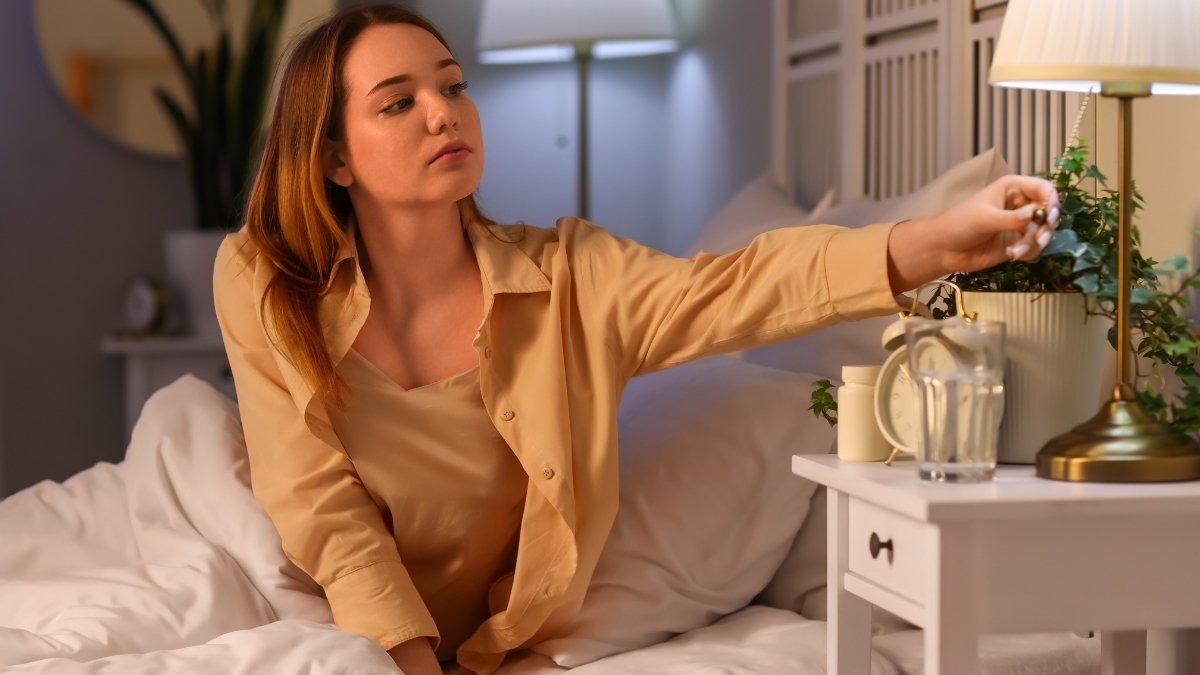
Your brain cannot go from 60 to 0. It needs a 30- to 60-minute “psychological off-ramp” before bed to “deactivate” from the day. The goal here is to lower your baseline cortisol (empty that “cup”) before you even get in bed.
- Non-Gadget Activities for the Buffer Zone:
- The “Brain Dump” Journal: Research shows 5-15 minutes of journaling—writing a to-do list for tomorrow or a gratitude list—”unloads” worries, calms racing thoughts, and helps you fall asleep faster.
- Strategic Dimming (A Biological Tool): This is critical. Exposure to normal room light (less than 200 lux) before bed can delay the onset of melatonin by 90 minutes. During your buffer zone, turn off all bright overhead lights. Use only dim, warm-toned lamps. Red, yellow, and orange lights are the least disruptive.
- The Temperature-Trigger Bath: A warm bath or shower 60-90 minutes before bed is great. It’s not the warmth that makes you sleepy—it’s the rapid drop in your core body temperature after you get out. This drop is a powerful biological trigger for sleepiness.
Solution 7: Cognitive Reframing (Dismantling “Clock-Watching”)
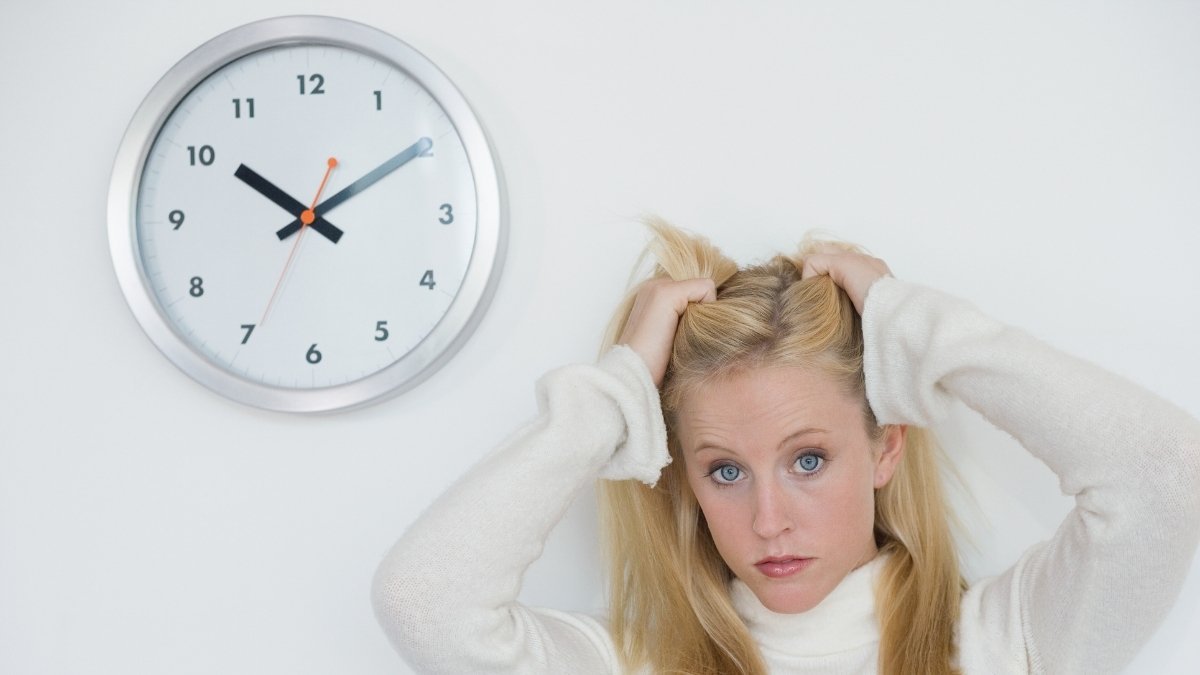
This is the cognitive part of CBT-I. It’s how you change your thoughts at 3 A.M. That “clock-watching” anxiety loop is the real enemy.
- Step 1: Hide the Clock. This is the #1 practical tip from every sleep expert. Tonight. Turn it to the wall. This prevents the anxiety-calculation (“I only have 3 hours left…”) from even starting.
- Step 2: Challenge the Thought. When the “I’ll be a wreck tomorrow” thought comes, call its bluff. Research shows people with insomnia consistently overestimate how long they’re awake and underestimate how much sleep they actually get. The biggest impact is on your mood, and even that is made worse by the negative thought itself.
- Step 3: Adopt a “Sleep Mindset.” I love this reframe from Dr. Michael Breus, Ph.D. (“The Sleep Doctor”). He notes that at 3 A.M., “negative thoughts proliferate”. Instead of, “Damn it, I’m awake!,” your new script is, “Oh, I guess my body wants to be up right now. That’s okay. I’m going to trust my body… this is a good opportunity to practice my breathing”. This defuses the panic.
Solution 8: The In-the-Moment Toolkit (Activating the Parasympathetic Switch)
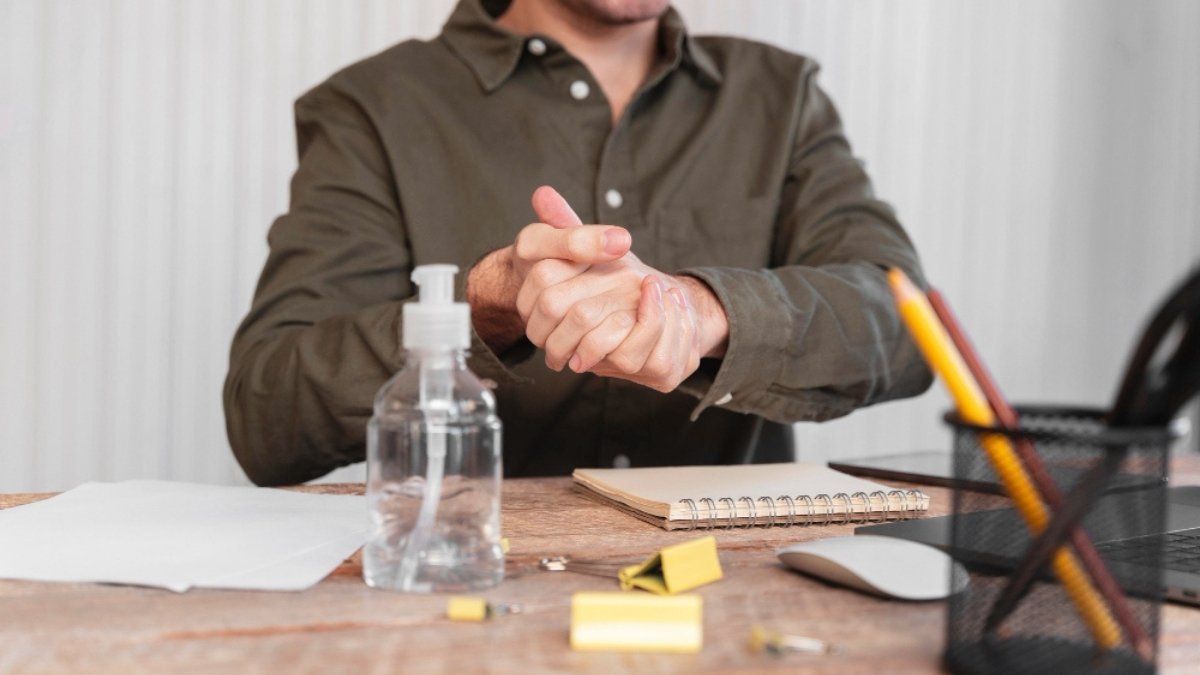
This is what you do while you are out of bed (per Solution 1) to manually override your “fight-or-flight” (sympathetic) system and activate your “rest-and-digest” (parasympathetic) system.
- Tool 1: 4-7-8 Breathing. A yogic technique with a direct, biological effect.
- How: Inhale quietly through your nose for 4 seconds. Hold your breath for 7 seconds. Exhale loudly (with a “whoosh” sound) through your mouth for 8 seconds.
- Mechanism: That long 8-second exhale is mechanically linked to your vagus nerve. It forces your heart rate to slow down and engages the parasympathetic system. It’s a manual off-switch for the 3 A.M. anxiety jolt.
- Tool 2: Non-Sleep Deep Rest (NSDR) / Body Scan. A meditation you can do from memory.
- How: Lie or sit comfortably and simply focus your attention sequentially on different parts of your body, noticing the sensation of relaxation (e.g., “my right toe is relaxed,” “my right ankle is relaxed…”).
- Mechanism: It works by shifting your focus. It gives the “anxious/planning” part of your brain a boring, neutral job to do, which allows the “sleepy” part of your brain to finally take over. The goal is not “trying to sleep.” The goal is just “resting.”
😴 Train Your Brain for Rest 🧠
❌ DO NOT ❌
These Actions Reinforce Wakefulness & Anxiety
- ⏰ Look at the clock. This is the #1 trigger for anxiety calculations.
- 🛌 Stay in bed “trying” to sleep. This trains your brain that the bed is for anxiety and wakefulness.
- 📱💡 Turn on your phone or bright lights. This immediately suppresses melatonin and signals “daytime.”
- 📧📰 Do something stimulating or stressful, like checking work email or watching the news.
- 🌪️ “Catastrophize” about how tired you will be tomorrow. This spikes cortisol.
- 🛑 Sleep in or nap late to “catch up.” This guarantees you will disrupt the next night’s sleep rhythm.
✅ DO ✅
These Actions Promote Calm & Re-associate Bed with Sleep
- 🙈 Hide your clock. Turn it to the wall before you go to bed.
- 🚶 Get out of bed if you are awake for more than **15-20 minutes.**
- 🚪🕯️ Go to another room and keep the lights as **dim as possible.**
- 📚 Do something quiet and boring, like reading a dull book or magazine.
- 🧘 Practice 4-7-8 Breathing or a Body Scan to activate your “rest-and-digest” system.
- ⏰ Maintain your fixed wake-up time, no matter what. This builds “sleep drive.”
- 💭 Reframe your thoughts: “My body is resting, and that is okay. This is a chance to practice my breathing.”
Strategy 9: Nutritional Stabilization

This is our final preventative measure. It’s a direct strike against that “Glycemic Rollercoaster” (the “Crash-and-Jolt” awakening).
The goal is simple: prevent the 3 A.M. hypoglycemic crash that triggers the adrenaline/cortisol “rescue” jolt. While a huge meal before bed is a bad idea, evidence suggests a small, nutrient-dense snack 30-60 minutes before bed can help stabilize blood sugar.
The composition of this snack is everything. A carb-only snack will just cause a crash. The ideal snack is a combination that provides a slow, steady release of glucose all night.
- The “Perfect” Snack Formula: (1 Complex Carbohydrate) + (1 Protein / Healthy Fat)
- Why it works: The complex carb gives you the slow-release glucose. The protein or fat slows down the digestion of those carbs, ensuring an even, steady release that prevents a 3 A.M. blood sugar “crash.”
- Specific, Evidence-Based Examples:
- A few whole-wheat crackers with low-fat cheese
- A small, sliced apple with a tablespoon of peanut butter
- A small bowl of Greek yogurt (protein) with a few berries (carb)
- A piece of whole-wheat toast with peanut butter or avocado
- A small handful of almonds or walnuts
(Bonus: Some foods contain natural sleep aids, like tart cherry juice, which has melatonin, and kiwi, which contains serotonin.)
Need a Little Extra Help? A Few Tools That Can Make a Difference
Look, I know the whole point of this article is “non-gadget” solutions. And 99% of your success will come from the behavioral changes we just talked about. But let’s be real—sometimes our environment is just plain noisy or bright. If you’ve done the internal work, a few simple tools can help protect that hard-won peace. Think of these as “defensive” tools, not “fixes.”
1. NICETOWN Blackout Curtains

If your bedroom window gets hit by a streetlight or the sunrise way too early, these are a game-changer. Creating a pitch-black “cave” environment is a powerful signal to your brain that it’s still time to rest.
2. Mavogel Modal Sleep Mask

For a more direct (and portable) solution, a good sleep mask that actually blocks all the light is invaluable. This one is known for being soft and having a smart nose-bridge design to prevent those annoying light leaks that can disrupt sleep.
3. Mack’s Pillow Soft Silicone Earplugs

Whether it’s a snoring partner, a noisy neighbor, or city traffic, noise is a major sleep disruptor. These moldable silicone earplugs are a classic for a reason—they are comfortable (even for side sleepers) and create a quiet bubble to sleep in.
4. Hooga Amber Book Light

Love to read before bed? This is how you do it without sabotaging your melatonin (Solution 6). This light clips onto your book and casts a warm, amber-hued glow that is 99% free of the blue-spectrum light that messes with your sleep hormones.
5. Traditional Medicinals Nighty Night Tea

As part of your 60-minute “Buffer Zone” (Solution 6), a warm, calming, caffeine-free herbal tea can be a powerful psychological cue for sleep. This blend uses classic relaxing herbs like chamomile to help you unwind and signal to your body that the day is done.
Your New Game Plan
Look, the 3 A.M. awakening feels like a personal curse, but it’s not. It’s a logical, predictable, and solvable problem. It’s a vulnerable biological moment being exploited by a few behavioral and psychological accelerants.
You don’t need new gadgets. You need a new game plan.
Your Key Actions:
- Treat Your Bedroom for Sleep Only: The most powerful thing you can do is Stimulus Control Therapy (Solution 1). It’s tough, but it’s how you break the “bed = anxiety” link.
- Anchor Your 24-Hour Clock: The most effective preventative measures are Morning Sunlight (Solution 3) and a Fixed Wake Time (part of Solution 1). This programs your master clock so that 3 A.M. cortisol rise becomes a non-event.
- Defuse the 3 A.M. Panic: When it happens, the priority is not “trying to sleep.” It’s “reducing anxiety.” Hide the Clock (Solution 7) and use your 4-7-8 Breathing (Solution 8).
- Audit Your Accelerants: Be brutally honest with yourself about your alcohol, caffeine, and sugar habits. They are very likely the triggers pulling you out of sleep.
By consistently applying these strategies, you can retrain your brain, realign your body, and finally make 3 A.M. just another quiet, peaceful hour of sleep. You’ve got this.






